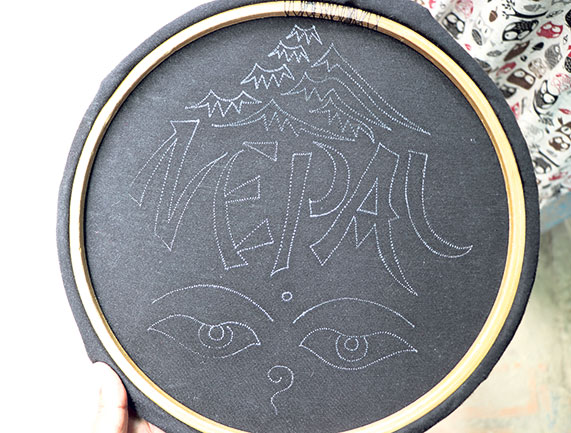Celebrating local craft in Jewelries
5 years ago

5 years ago

6 years ago

6 years ago

6 years ago

6 years ago

KATHMANDU, April18: People in the city are beginning to shed sleeves as they inch closer to summer. Keeping aside jackets, sweaters and full sleeves, people have started shopping for T-shirts and other light wears.
T-shirts come in various designs and prints. From patriotic slogans to pop culture, from brand logos to their copies, they come in plain or printed styles. Lately, there is a demand for T-shirts with quirky, customized prints and with the opening of online stores dealing in T-shirts, the buzz just seems to grow.
There is no accurate data as to how many T-shirts are sold monthly but the number ranges somewhere above tens of thousands. And despite the online stores, shops selling T-shirts are still opening and their sales have not dropped. In a single lane, we can find number of T-shirt stores opening side by side.
In between the big market of T-shirts with many stores selling all different types, there is a small niche market for embroidered T-shirts, eagerly waiting for promotion.
The Freak Street lane alone has 10 T-shirt shops, half of which deal embroidered T-shirts. These shops have been there for more than a decade doing the same thing. They have people mastering in stitching colored threads and making beautiful designs that still have more or less the same amount of customers.
People in these shops have been in the trade from five to 18 years, which tells that the style was in practice since a long time. However, even the people making these clothes have no idea about the origin and the time it actually turned into a business.
“I took up the skill as a means to earn a living and have been in the business for 10 years. Over the years, people have come to buy our T-shirts with designs representing ‘Nepal’, ‘Kathmandu’, ‘Buddha’ and ‘Mt. Everest’, et cetera which are preferred by tourists as souvenirs. Nepali people also send them to relatives abroad. Some others come with their own designs and ask us to make accordingly,” said Rojan Alam, a designer working at an embroidered T-shirt shop in Basantapur.
Embroidered T-shirts have a wide variety. Unlike printed T-shirts, they can be one of a kind, as every piece is stitched individually and manually. The designs are first traced onto the t-shirts, stretched in an embroidery ring, then with the help of a sewing machine and special embroidery needles, the designs come to life with every stitch.
Lately, some people have started using heavy machines for the same. However, for Asraf Ali, a designer at a Freak Street-based shop, the quality with the machine is not the same as it is basically meant for producing in larger quantity.
According to Ali, embroidered t-shirts are wash-friendly, and the designs do not fade or distort.
Regardless of these qualities, the sales seem to be in favor of printed t-shirts over embroidered ones. Even with the existence over many years, they have not gone mainstream. According to Sabin Bhandari, an entrepreneur selling printed t-shirts, the reasons why embroidered t-shirts have not gone mainstream might be the lack of equipment for production and that people may feel them heavier to wear. Bhandari said he preferred printed t-shirts as a user because they are lighter, cheaper and more comfortable.
Embroidered t-shirts use cotton cloth, and so does Bhandari's company, Butta. Both can produce the same designs. Both take custom-orders and have a similar price range. But Butta has a better business outlook in comparison to embroidered one. On average, they sell more than 300 t-shirts a month, whereas an embroidered t-shirt store hardly sells 100. The latter's sales increase a little bit when they take orders from large organizations but the difference is still not that significant, according to a Jhhochen-based embroidered t-shirt maker Asif Hussain.
Going by the market demand, embroidered shops have slowly started putting printed t-shirts in their shops to attract customers. When people step into their stores, a tiny percentage gets interested to try the embroidered ones. However, the irregularity of these customers does not help sustain the business. These shops also do not promote or market their products, which inevitably has an effect on their sales. If embroidered t-shirts are marketed like printed t-shirts, their business may grow.



Leave A Comment